Terabyte (TB)
What is a terabyte (TB)?
A terabyte (TB) is a unit of digital data that is equal to about 1 trillion bytes. In decimal notation (base 10), a terabyte is exactly 1 trillion bytes. In binary notation, a terabyte is equal to 240 bytes, or 1,099,511,627,776 bytes. The terabyte is typically used as a measure for storage capacity or the amount of stored data.
The prefix tera is derived from the Greek word for monster. It would take 728,177 floppy disks or 1,498 CDs to hold 1 TB of information. However, computers can now be configured with hard disk drives (HDDs) that offer more than 1 TB of capacity. Of course, many of today's systems, including desktops and laptops, come with solid-state drives (SSDs) instead of HDDs, yet even in this case, capacities are starting to reach terabyte levels.
As with other data measurements, computer, storage and network systems rely on the following two standards to determine the number of bytes in a terabyte:
- The base-10 standard uses the decimal system and specifies that 1 TB is equal to 1012 bytes, or 1 trillion bytes.
- The base-2 standard uses the binary system and specifies that 1 TB is equal to 240 bytes, or 1,099,511,627,776 bytes.
When storage capacities were smaller, the discrepancies between the two standards had little impact, but now that much more data is being stored, these differences have greater significance. For example, when the decimal standard is used, 1 TB is equal to 1,000 gigabytes (GBs), but when the binary standard is used, 1 TB is equal to 1,024 GB.
The difference of 24 GB can represent a substantial amount of data. For this reason, the term tebibyte was coined to refer to binary measurements to distinguish them from decimal measurements. However, in situations where the exact number of bytes is not as important, terabyte is still often used for either standard.
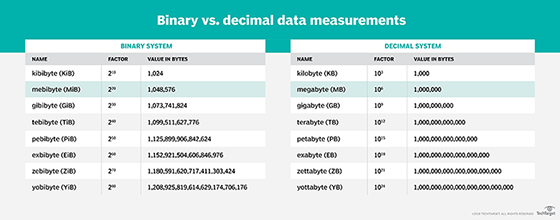
Terabyte history
In 1983, IBM released the Personal Computer XT, the successor to the original IBM PC. The XT was the first PC to include a built-in hard drive as a standard feature. At the time, HDDs were available in 10 megabyte (MB) or 20 MB capacities. It was not until 1991 that 1 GB disks were available to consumers, and even then a gigabyte of storage cost nearly $3,000.
Sixteen years later, in 2007, Hitachi began selling the first 1 TB HDD to consumers. The HDD marked a milestone for data storage, and it also emphasized how rapidly storage capacity was growing. With the drive's release, Hitachi noted that it took 35 years for the storage industry to reach 1 GB and 14 years to deliver 500 GB. After that, it took a mere two years to reach 1 TB.
Hitachi quickly gained competition. In 2008, Seagate released the FreeAgent GoFlex portable drive, which offered 1.5 TB of storage. Today, HDDs such as the Western Digital Ultrastar DC HC650 and OptiNAND hybrid hard disk/flash drive can store up to 20 TB of data, and SSDs such as the Nimbus Data ExaDrive can hold up to 100 TB of data.
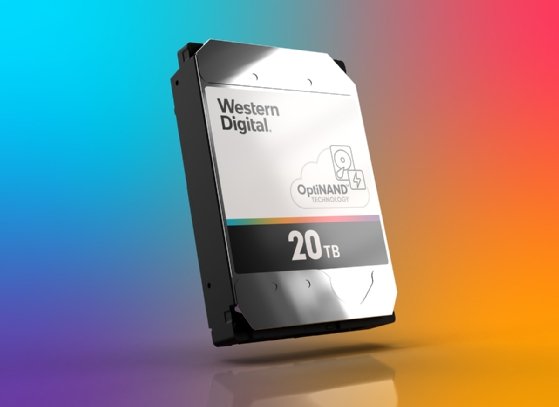
Is 1 TB of storage enough?
According to futurist Ray Kurzweil in The Singularity is Near, the capacity of a human being's functional memory is estimated to be 1.25 TB. In more concrete terms, a terabyte of data is equivalent to any of the following:
- 472 hours of broadcast-quality videos;
- 130,000 digital photos;
- 150 hours of high-definition recordings; or
- 2,000 hours of CD-quality recordings.
NASA reports that the Hubble Space Telescope generates about 10 TB of new data a year and that the total Hubble archive is currently over 150 TB.
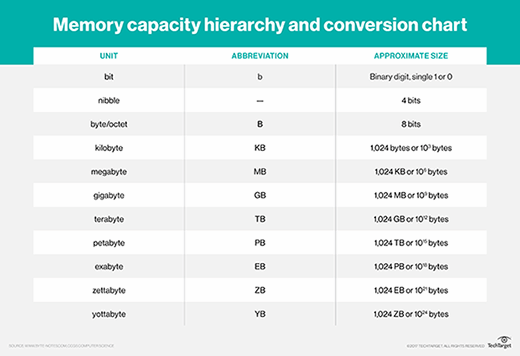
Major vendors with terabyte storage
A series of mergers of HDD vendors in the early 2000s left Seagate, Toshiba and Western Digital -- which acquired Hitachi in 2012 -- as the main companies selling HDDs with a TB or more of capacity. More recently, vendors such as Samsung, LaCie and HGST have also made their mark on the HDD industry.
The advent of helium-filled HDDs has enabled storage drives to use the lightness of helium to increase storage density. First offered by HGST in 2013, helium-filled drives make up some of the highest capacity terabyte drives available. In 2017, Western Digital released a 12 TB helium-based HDD, the Ultrastar He12, and now offers the Ultrastar DC HC650 helium-filled HDD, which can store up to 20 TB of data.
Vendors are actively pursuing other technologies as well. For example, Seagate is working on HDDs that use Heat-Assisted Magnetic Recording (HAMR) technology. Western Digital is also pursuing HAMR-based storage, as well as storage based on Microwave-Assisted Magnetic Recording technology. These new technologies have the potential to increase drive density even further in order to squeeze more terabytes on a single HDD.
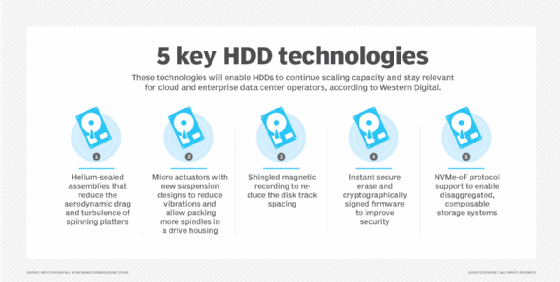
Many vendors have also moved into SSD territory. For example, Seagate, Toshiba and Western Digital now sell SSDs with at least 1 TB of capacity, along with companies such as Corsair, Crucial, Intel, Kingston Technology, Micron Technology and Samsung.
As high-capacity SSDs take their place in the data storage market, enterprise storage vendors are offering even more terabytes. For instance, Nimbus Data now sells a 100 TB SSD -- the ExaDrive DC100 -- that's available as either a SATA or SAS device. With a list price of $40,000, the ExaDrive comes in at about 40 cents per GB.
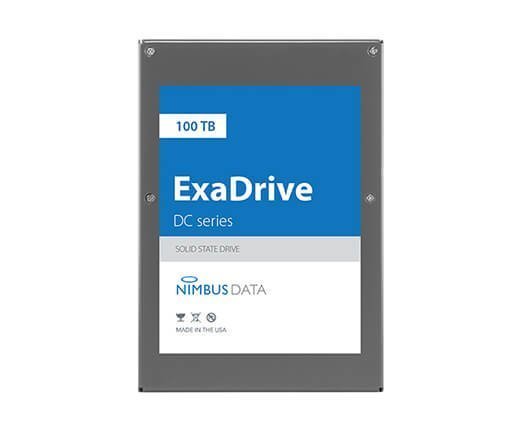
The cost of a terabyte
Like any other computer component, the cost of HDDs has decreased over time. When 1 TB HDDs were first introduced in 2007, a consumer-grade drive cost approximately $375. By mid-2018, a 4 TB external hard drive for consumers cost approximately $150 -- four times the capacity for less than half the 2007 price. Eight-terabyte drives in 2018 cost about $600, with some archive-grade drives available for as little as $300. Today, consumers can get a 14 TB external HDD for $300.
When it comes to cost per GB, TB-level HDDs can get interesting. With Seagate, for example, drives decrease in cost per gigabyte as they increase in capacity, but only up to a certain point. In some cases, customers might pay a premium for the latest generation, which usually offers the greatest capacities.
Consider the costs of Seagate's STGX4000400 external HDDs:
- The 1 TB drive runs 5 cents per GB and costs $50 for the drive.
- The 4 TB drive runs 3 cents per GB and costs $120 for the drive.
- The 10 TB drive runs 2.2 cents per GB and costs $220 for the drive.
- The 14 TB drive runs 2.1 cents per GB and costs $300 for the drive.
- The 18 TB drive runs 2.8 cents per GB and costs $500 for the drive.
The per-GB cost for SSDs does not necessarily follow the same patterns as HDDs, but there are still similarities. For instance, the Western Digital WD Blue 3D NAND Internal PC SSD is available with the following terabyte capacities:
- The 1 TB drive runs 9.5 cents per GB and costs $95 for the drive.
- The 2 TB drive runs 9 cents per GB and costs $180 for the drive.
- The 3 TB drive runs 9.5 cents per GB and costs $380 for the drive.
Cloud storage can also be sold in terabyte increments, usually priced per month. However, pricing can vary widely depending on the service provider and type of platform. For example, providers such as Dropbox, Google and OneDrive offer 1 TB of basic storage that can cost anywhere between $5 to $10 per month.





